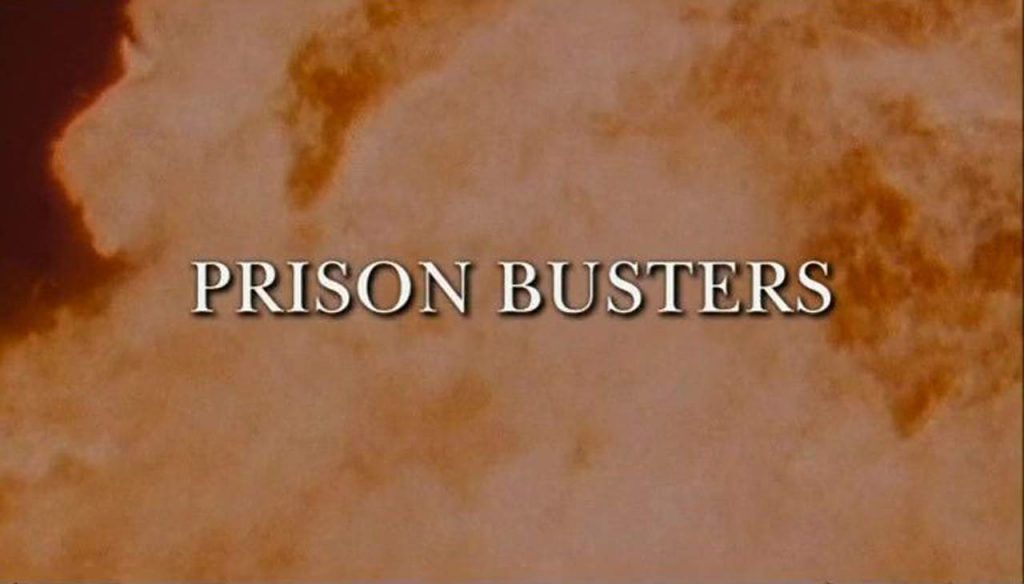Great Raids of World War II episode 2: In late 1943, the Resistance asked for help – some of their top operatives were being held in Amiens prison and facing interrogation, torture and execution. They must be rescued. The plan which evolved depended on a very special aircraft – the Mosquito fighter-bomber – and the skill and courage of its pilots in flying low enough to breach the prison walls with their bombs.
Operation Jericho was a World War II bombing raid conducted by the Royal Air Force (RAF) on Amiens prison in German-occupied France on February 18, 1944. The raid was carried out by a force of Lancaster bombers, with the intention of destroying the prison and allowing the inmates, including members of the French Resistance, to escape. The operation was successful in achieving its objective, with the prison being heavily damaged and over 250 prisoners, including resistance fighters, political prisoners, and common criminals, being able to escape. However, the operation also resulted in the deaths of around 100 prisoners and the destruction of much of the surrounding area, including several civilian homes.
Operation Jericho was seen as a controversial action at the time, with some arguing that the bombing was a necessary means of supporting the resistance and undermining the German occupation, while others believed that the destruction of the prison and the loss of civilian lives was not justified.
World War II was the greatest military confrontation the world has ever known. On land and sea and in the air the scale of the conflict was unprecedented. But amid the great campaigns were many smaller-scale operations which were vital to Allied success – occasions when small numbers of men could have an effect out of all proportion to their numbers; occasions when the course of the war hinged on their courage and daring.
This series looks at six such raids. With the use of veterans’ accounts; carefully researched archive film; meticulous reconstructions and 3-D graphics the viewer is put right into the heart of the action – whether it was foiling Hitler’s attempts to acquire an atomic bomb, or discovering the secrets of the air defences of the Nazi Reich. The recreated raids include the British and Norwegian mission to smash Hitler’s nuclear programme; the canoe-borne commando assault on Bordeaux to disrupt supplies of raw materials essential for Hitler’s war machine; and the paratroop capture of a key German radar installation at Bruneval, which brought back information vital to enable Britain’s bombers to strike at the heart of Nazi Germany. All six episodes from the series are included on this set.
Great Raids of World War II episode 2 – Prison Busters
Operation Jericho
Operation Jericho (Ramrod 564) took place on 18 February 1944 during the Second World War. Allied aircraft bombed Amiens Prison in German-occupied France at very low altitude to blow holes in the prison walls, kill German guards and use shock waves to spring open cell doors. The French Resistance was waiting on the outside to rescue prisoners and spirit them away. Mosquito fighter-bombers breached the walls, prison buildings and destroyed the guards’ barracks. Of the 832 prisoners, 102 were killed by the bombing, 74 were wounded and 258 escaped, including 79 Resistance members and political prisoners; two-thirds of the escapees were recaptured.
Two Mosquitos and a Typhoon fighter escort were shot down and another Typhoon was lost at sea. The raid is notable for the precision and daring of the attack, which was filmed by a camera on one of the Mosquitos. There is debate as to who requested the attack and whether it was necessary.
Nazi Germany
Nazi Germany (officially known as the German Reich from 1933 until 1943, and the Greater German Reich from 1943 to 1945) was the German state between 1933 and 1945, when Adolf Hitler and the Nazi Party controlled the country, transforming it into a dictatorship. Under Hitler’s rule, Germany quickly became a totalitarian state where nearly all aspects of life were controlled by the government. The Third Reich, meaning “Third Realm” or “Third Empire”, alluded to the Nazi claim that Nazi Germany was the successor to the earlier Holy Roman Empire (800–1806) and German Empire (1871–1918). The Third Reich, which Hitler and the Nazis referred to as the Thousand-Year Reich, ended in May 1945 after just 12 years when the Allies defeated Germany, ending World War II in Europe.
On 30 January 1933, Hitler was appointed chancellor of Germany, the head of government, by the president of the Weimar Republic, Paul von Hindenburg, the head of state. On 23 March 1933, the Enabling Act was enacted to give Hitler’s government the power to make and enforce laws without the involvement of the Reichstag or president. The Nazi Party then began to eliminate all political opposition and consolidate its power. Hindenburg died on 2 August 1934, and Hitler became dictator of Germany by merging the offices and powers of the chancellery and presidency. A national referendum held 19 August 1934 confirmed Hitler as sole Führer (leader) of Germany.
All power was centralised in Hitler’s person and his word became the highest law. The government was not a coordinated, co-operating body, but a collection of factions struggling for power and Hitler’s favour. In the midst of the Great Depression, the Nazis restored economic stability and ended mass unemployment using heavy military spending and a mixed economy. Using deficit spending, the regime undertook a massive secret rearmament program, forming the Wehrmacht (armed forces), and constructed extensive public works projects, including the Autobahnen (motorways). The return to economic stability boosted the regime’s popularity.




